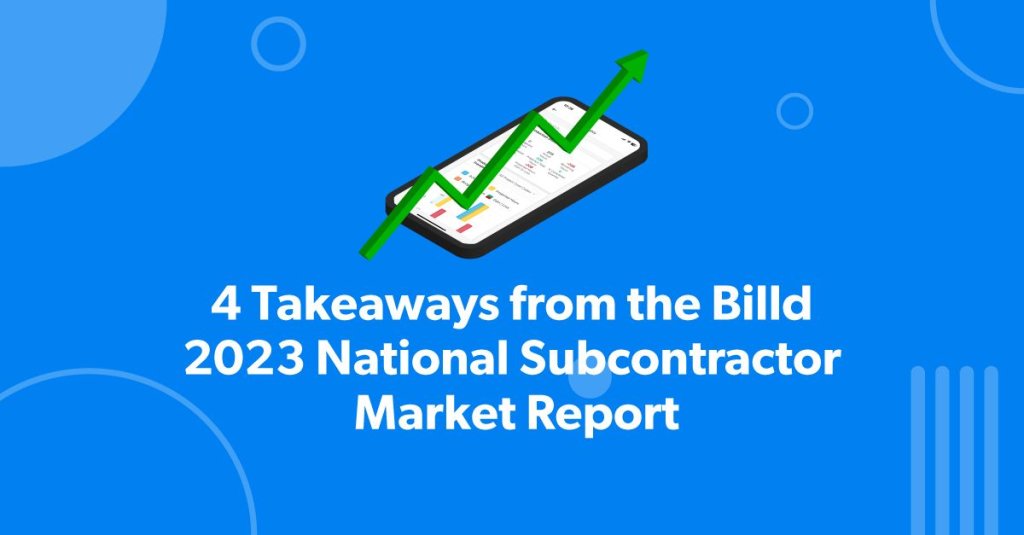Construction is one of the nation’s largest industries, without which economic growth and innovation is impossible. In this massive industry, subcontractors are some of the biggest players and assume most of the risk.
Keep reading to learn more about where subcontractors stand in the market as we examine the findings of the latest Billd National Subcontractor Market Report.
Subcontractors managed to succeed despite rising material and labor costs
Throughout 2022, subcontractors bore the brunt of rising material and labor costs, paying an additional $97 billion. In spite of this, 61% of respondents to Billd’s questionnaire reported that their business grew in 2022.
There’s a paradox to this statistic: even though most businesses grew, 57% reported that their overall profitability declined or stayed the same, even with growth in revenues. Interestingly, this figure is the same as it was in 2021. A big reason for this is that subcontractors feel that they can’t charge enough for their bids to cover the rising costs of labor and materials.
For the third year in a row, a rising number of subcontractors reported paying out of pocket for labor costs while they waited for payment: 87% in total. They also report that labor costs increased by 15% on average in 2022, and many worry that the lack of available skilled labor will continue to be an issue in 2023.
Problems with suppliers continue
Supply chains have been strained since the beginning of the COVID-19 pandemic, and those problems persist today. In 2022, average material costs increased by 26%, with 66% of subcontractors saying that these rising prices had a decisively negative effect on their business. Many subcontractors have had to increase their bids to offset these costs and because they expect those costs to continue to rise in 2023.
These challenges have often resulted in strained relationships with suppliers, with 73% of respondents saying that material price fluctuations had a negative impact on their supplier relationships. Other issues like lead times and lost discounts further complicated supplier relations.
Slow or delayed payments from General Contractors caused additional issues
Subcontractors often cited slow payment cycles as a problem for their business, with 60% saying they weren’t satisfied with the speed at which they were paid by general contractors. The average wait time for payments in 2022 was 74 days, with some subcontractors waiting as long as 120 days to receive payment. This meant that 73% of respondents had to pay out of pocket for materials while they waited on payment from general contractors or property owners.
Prompt payment is so important to subcontractors that 91% of respondents said they would offer a 1-5% discount for guaranteed payments within 3 days of approved applications. Prompt payment is a critical aspect of managing subcontractors. In a tight market, this could give general contractors a decisive competitive advantage.
Most subcontractors plan for growth in 2023
Despite all these challenges, 72% of subcontractors plan for growth this year, with 58% expressing interest in pursuing larger projects. While challenges and economic uncertainty persist, there are also many opportunities for subcontractors to pursue.
One of the most exciting avenues for subcontractors is the availability of new technology that helps make things like daily reporting, time tracking, and production tracking easier. Plus, with Billd’s financial and payment products like Pay App Advance, subcontractors can stabilize cash flow and run their businesses more effectively.
Take a look at the full report to learn more about current industry trends for subcontractors.
